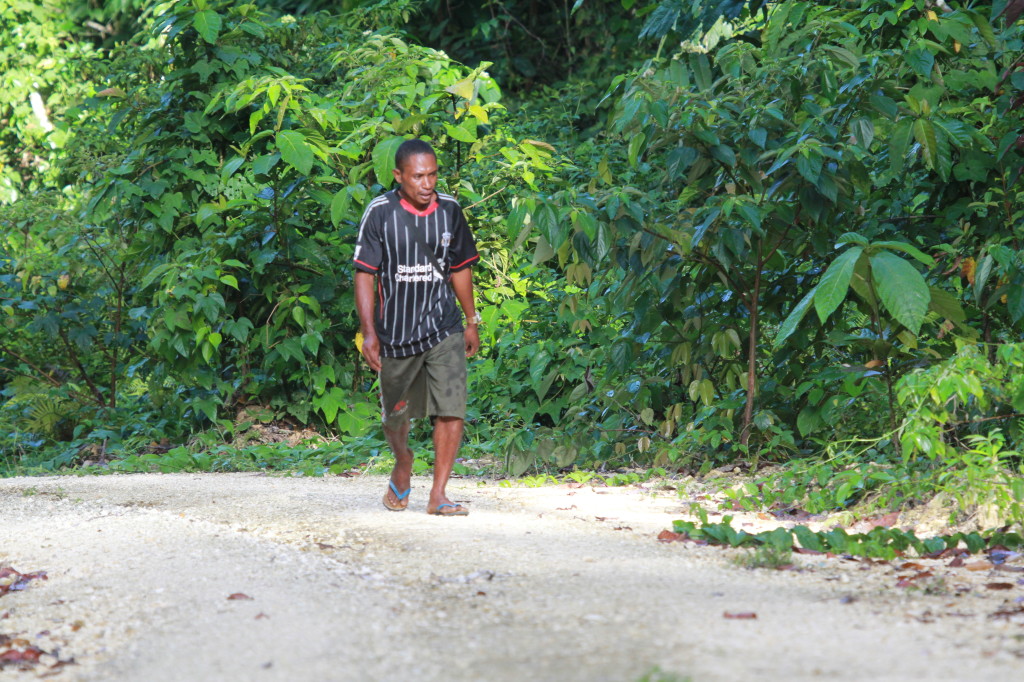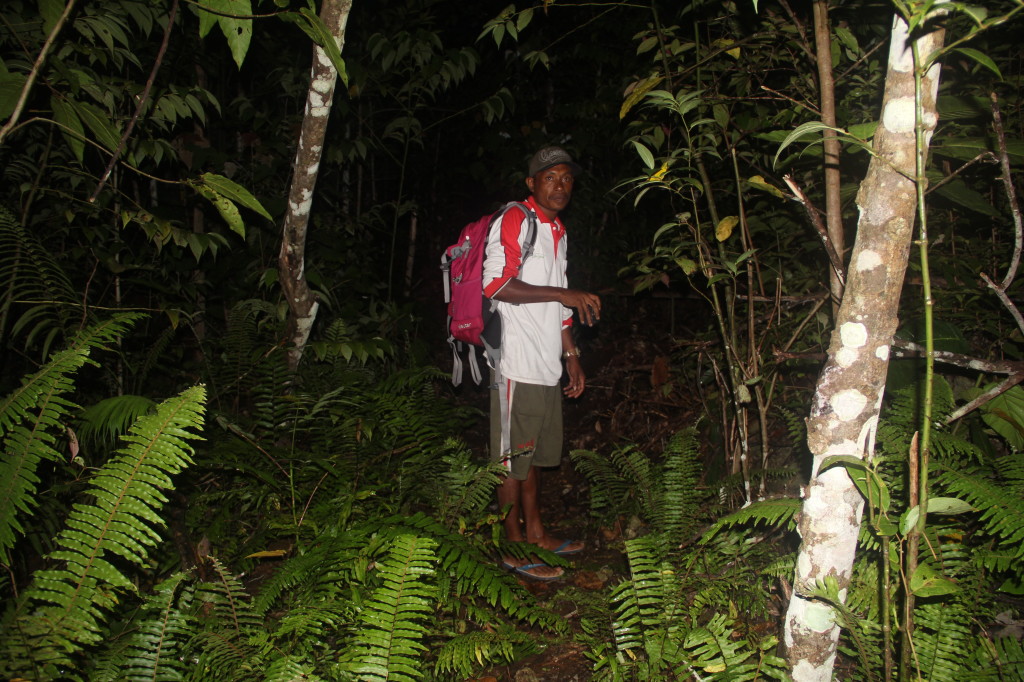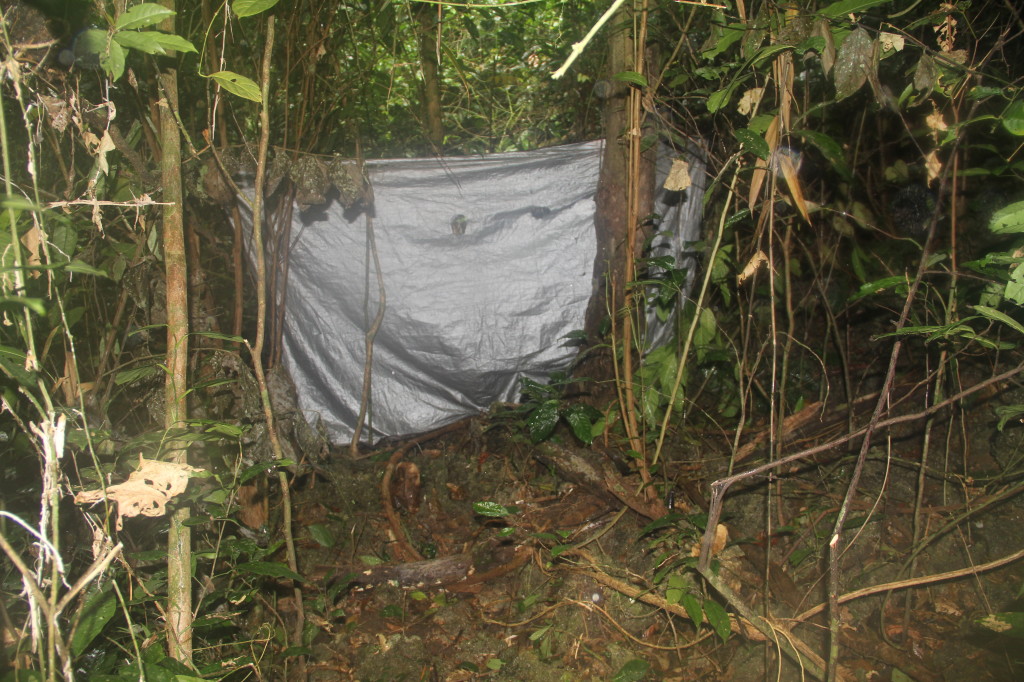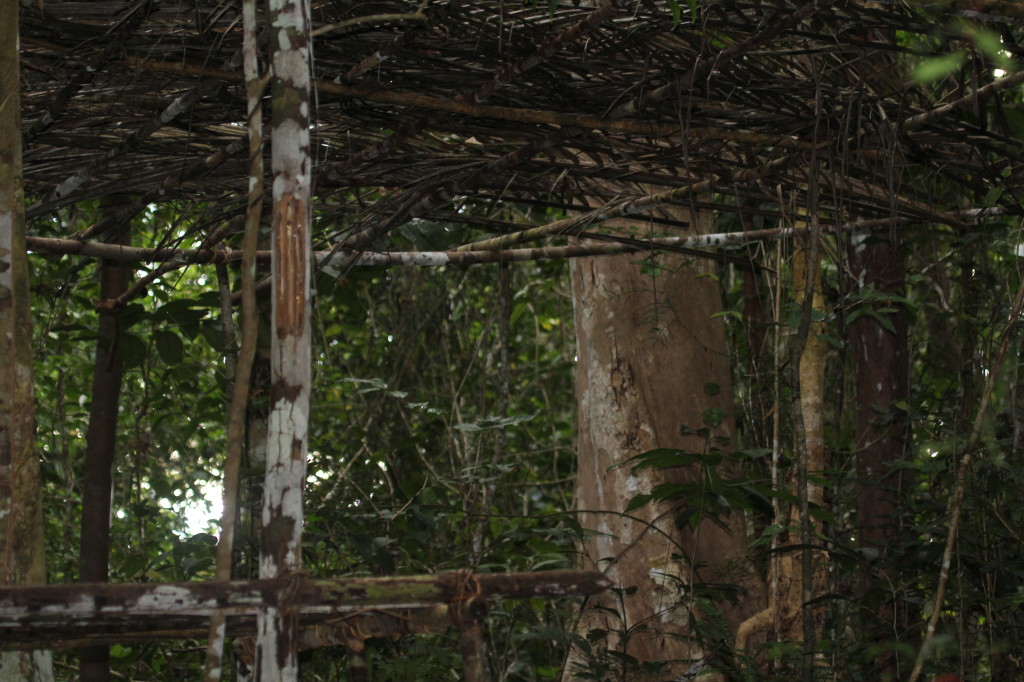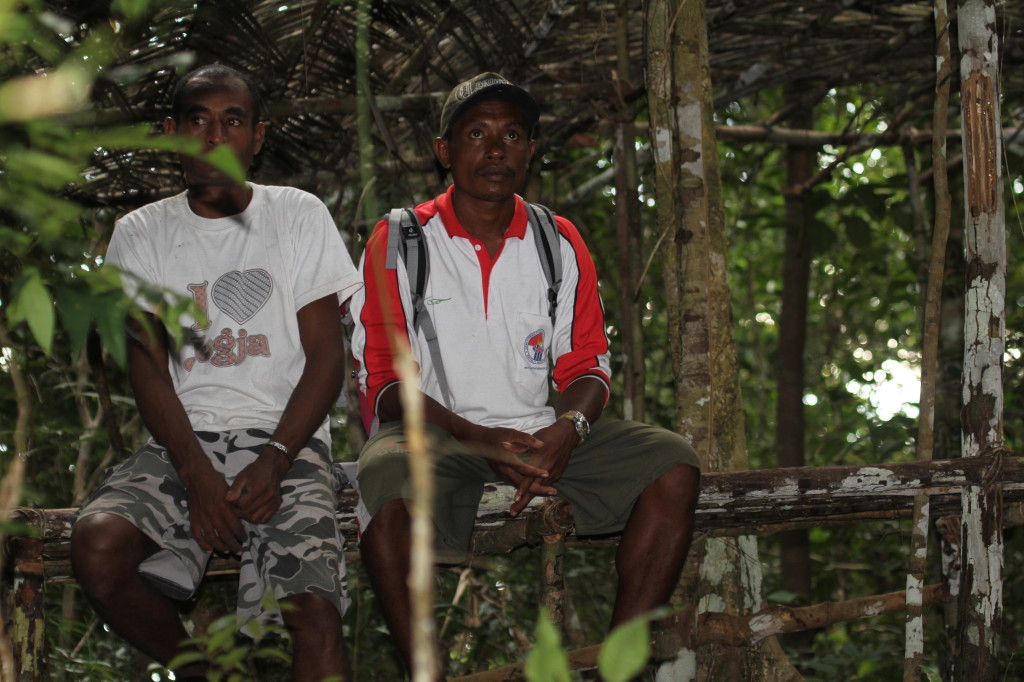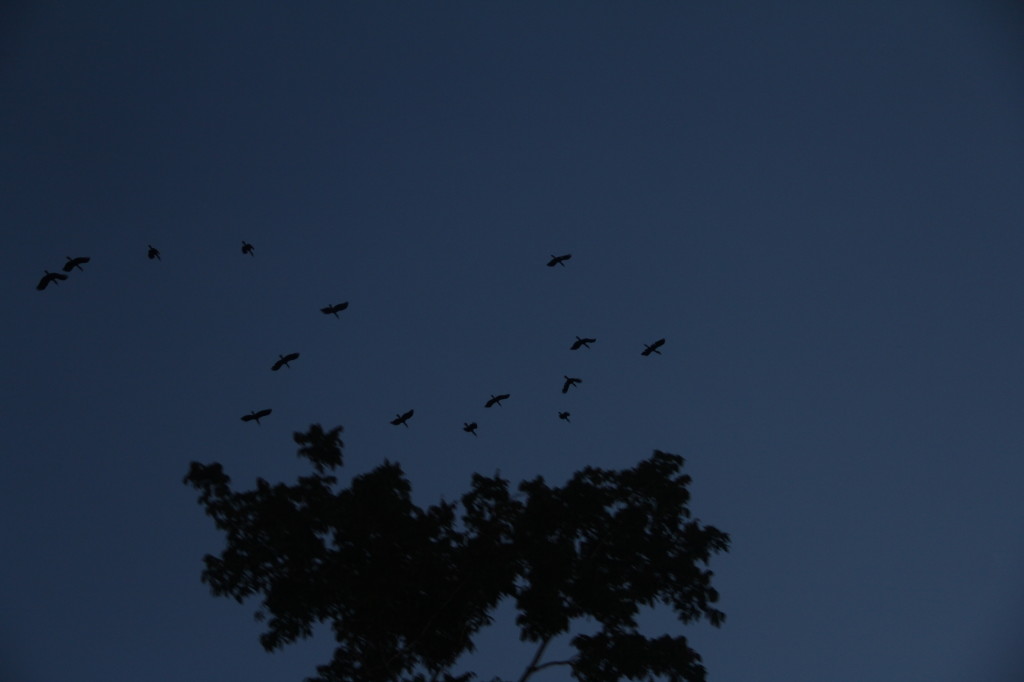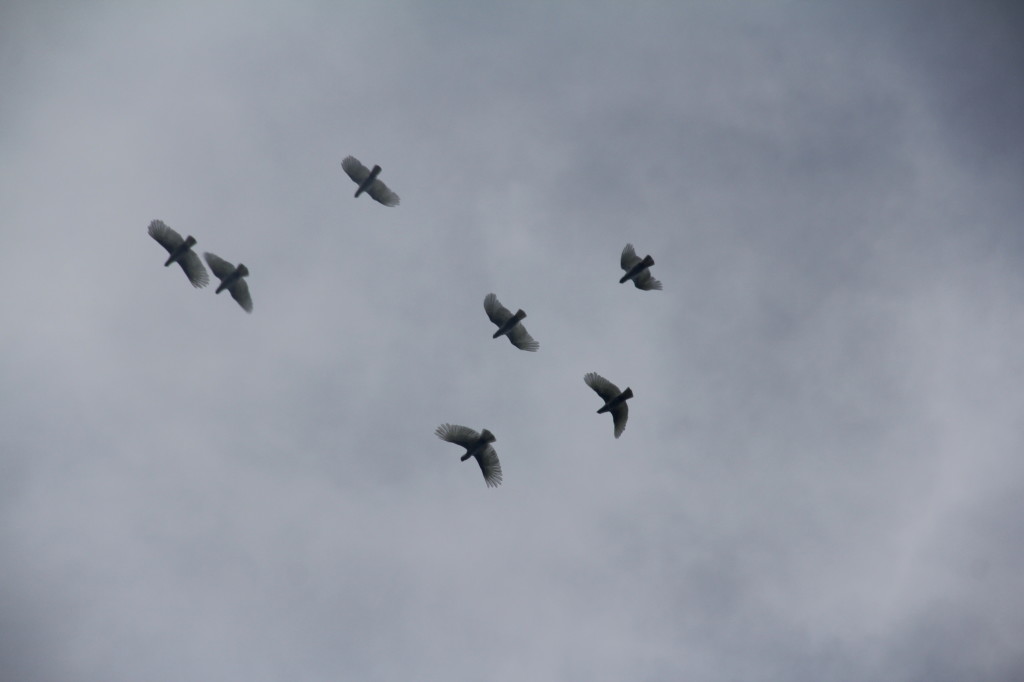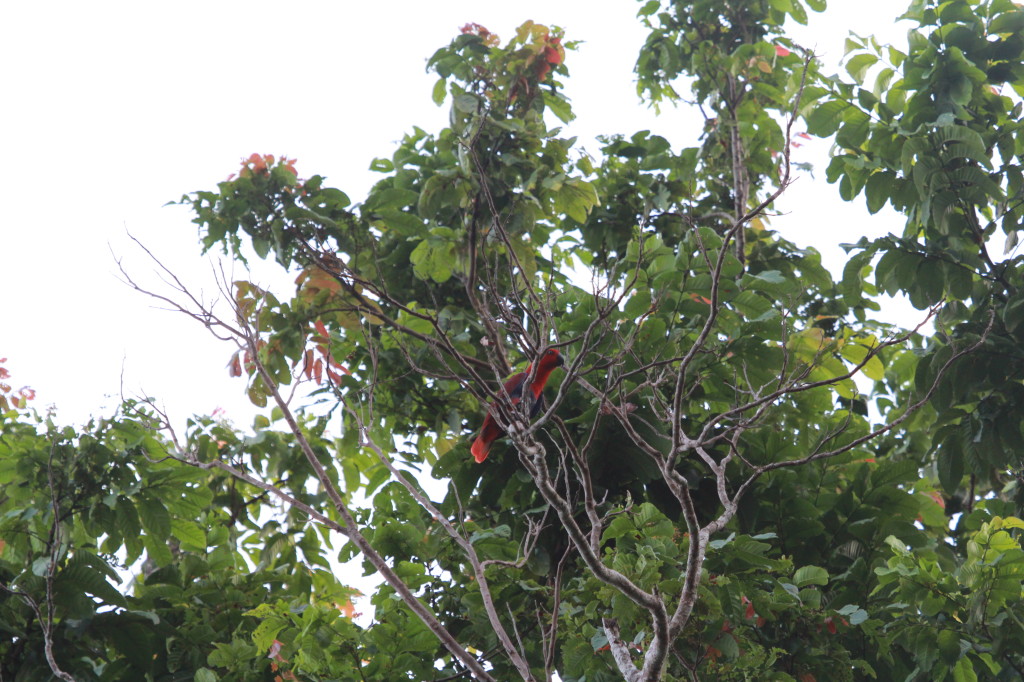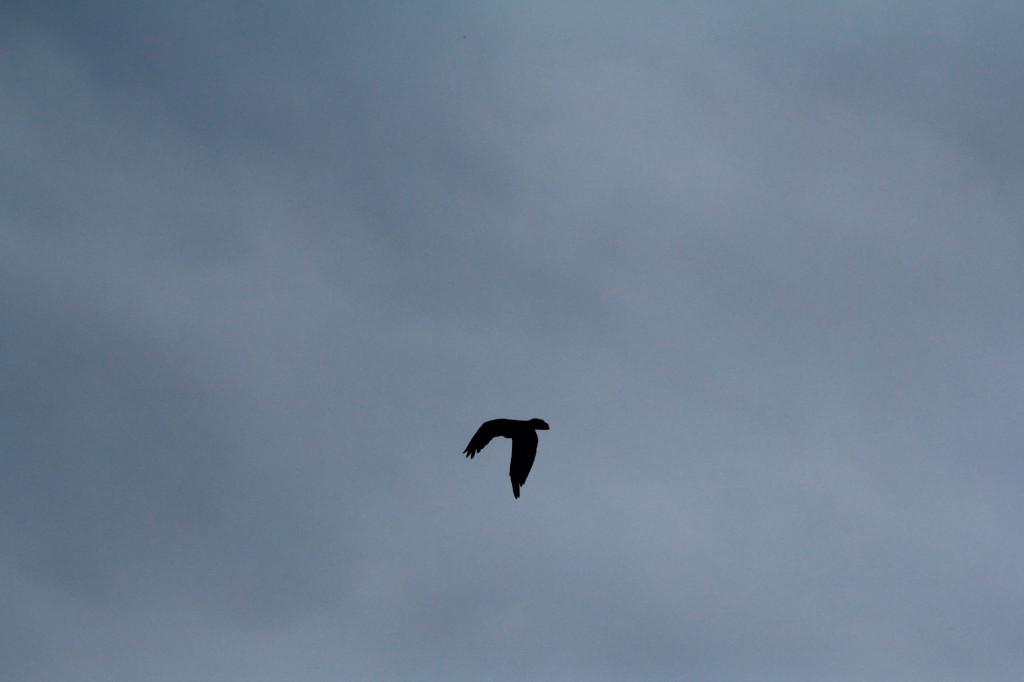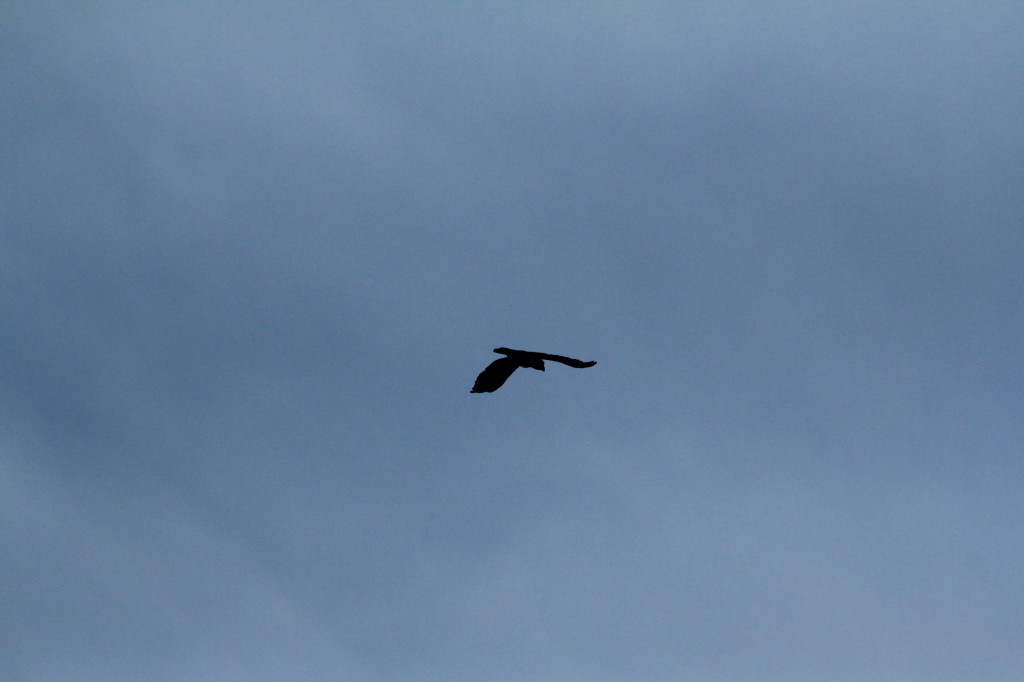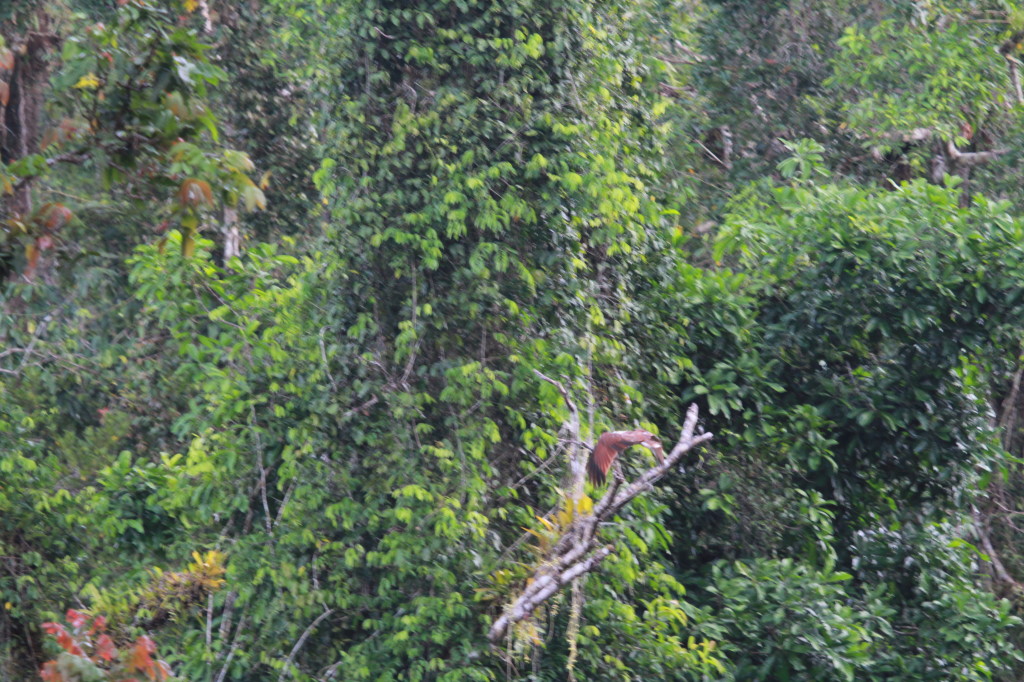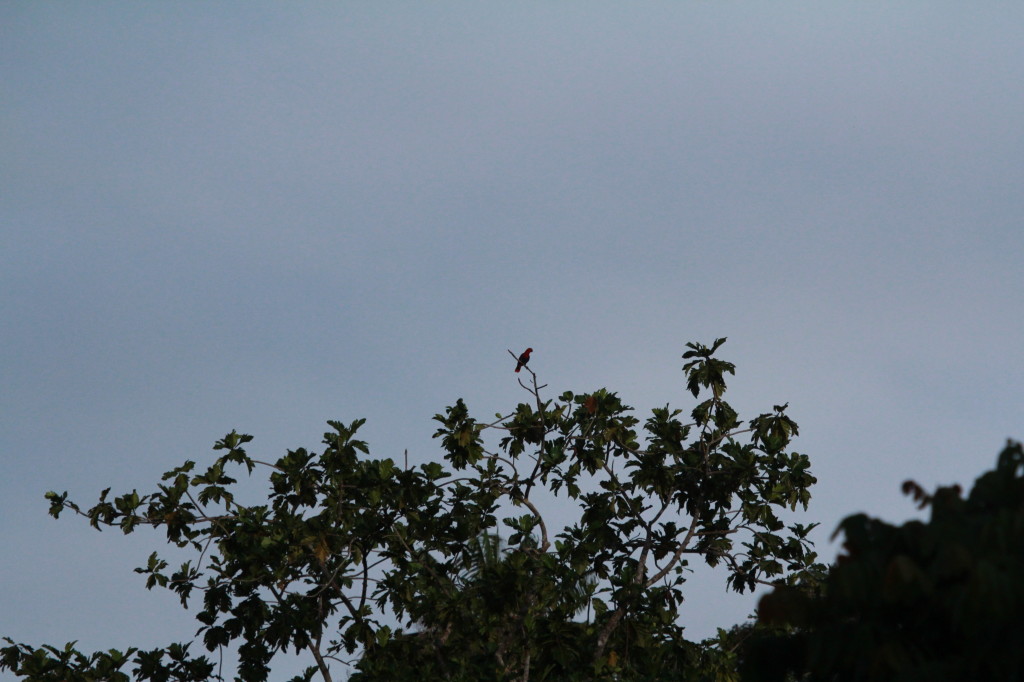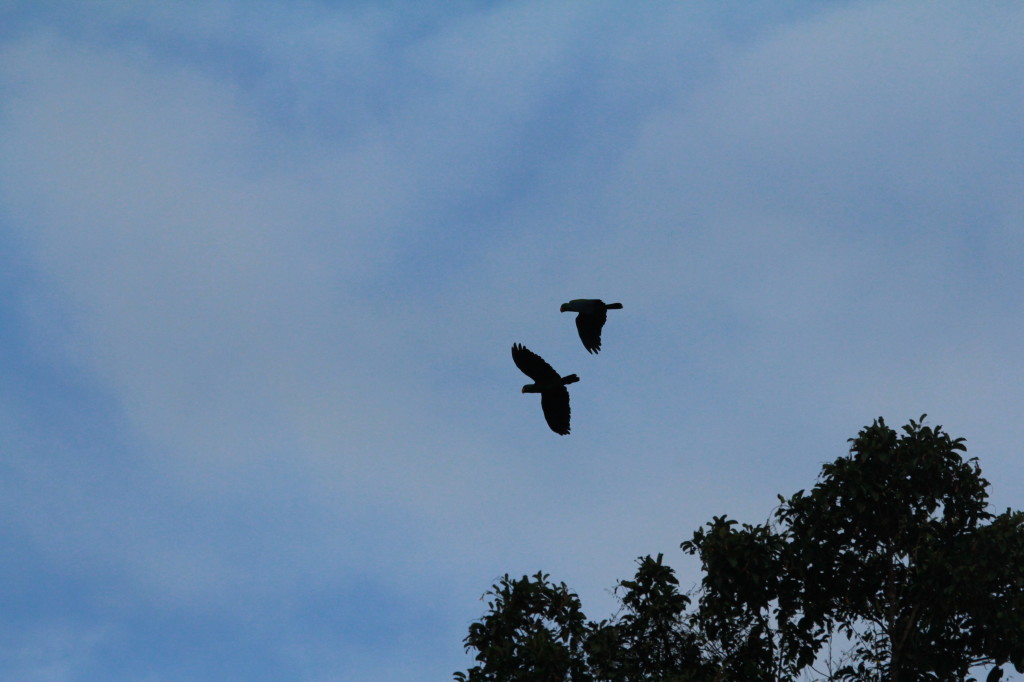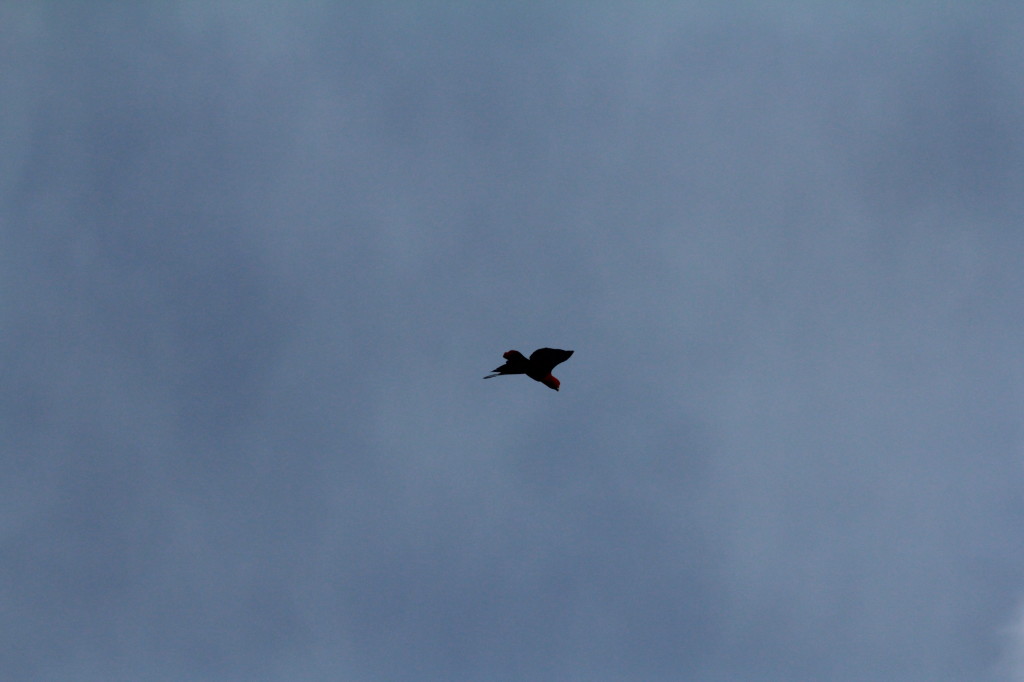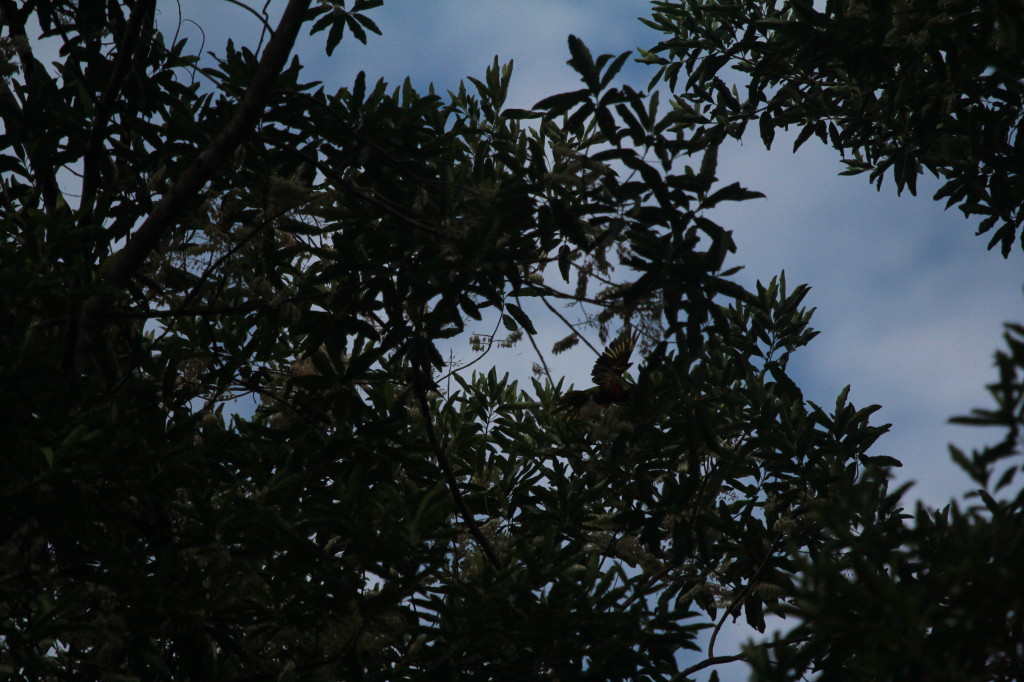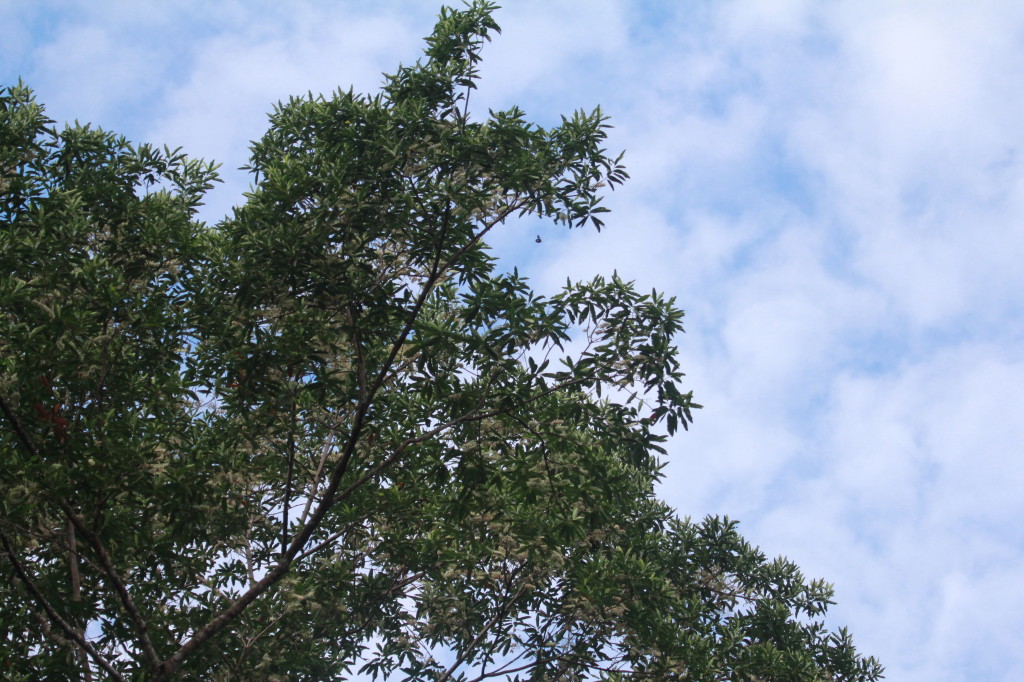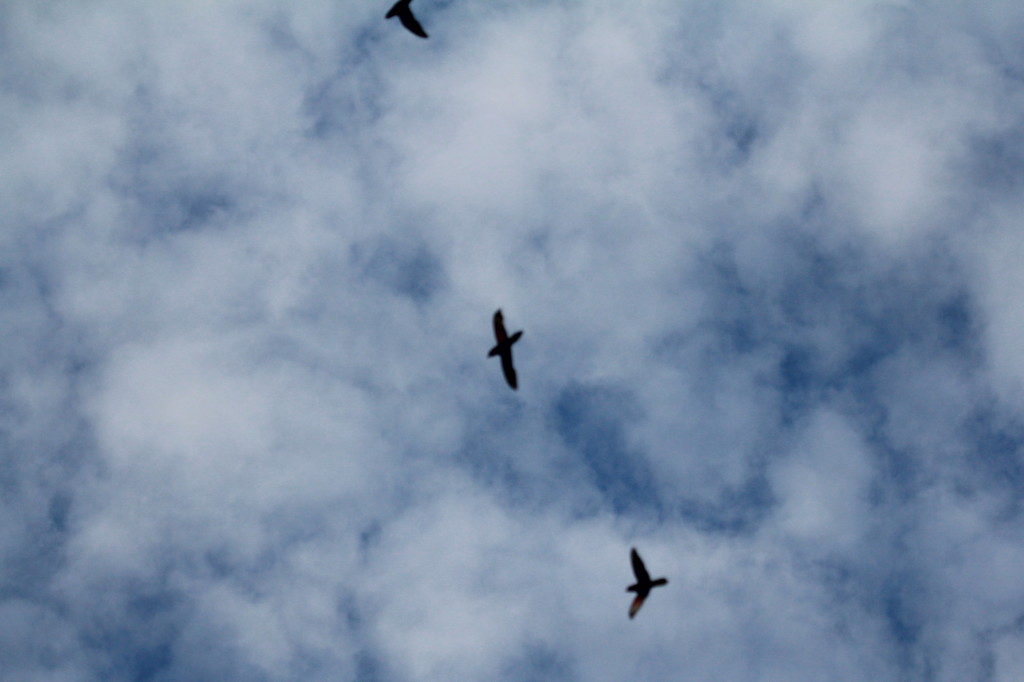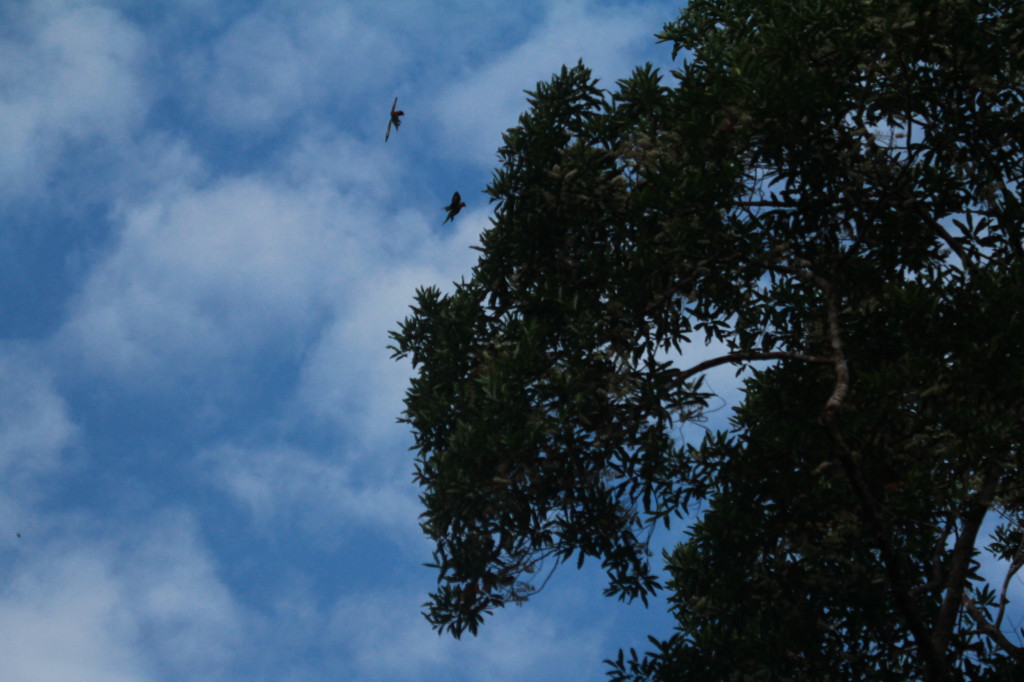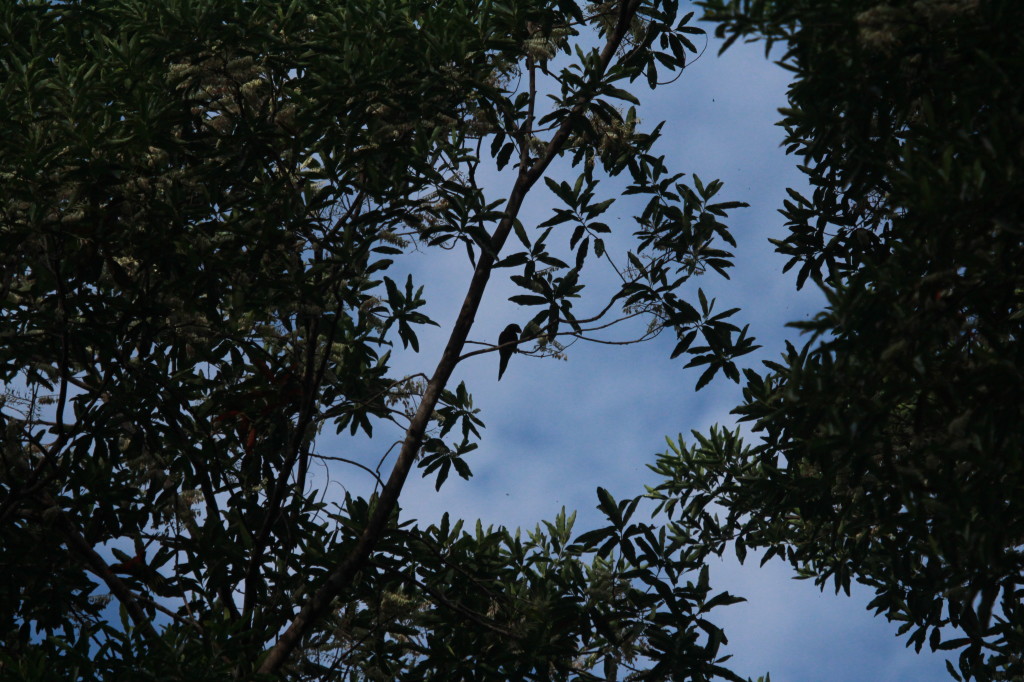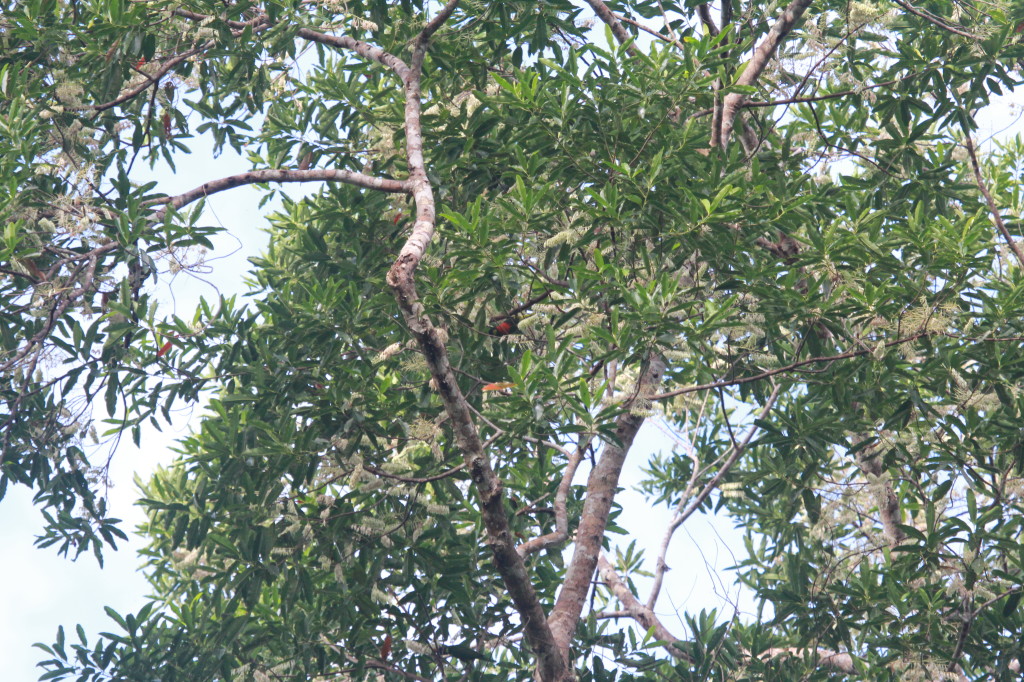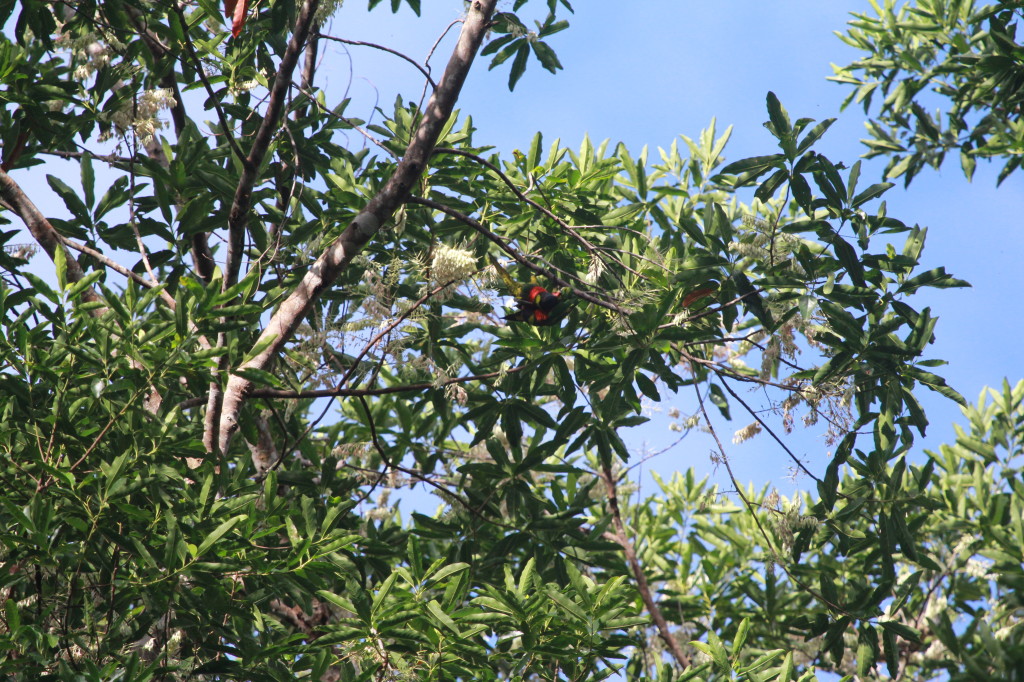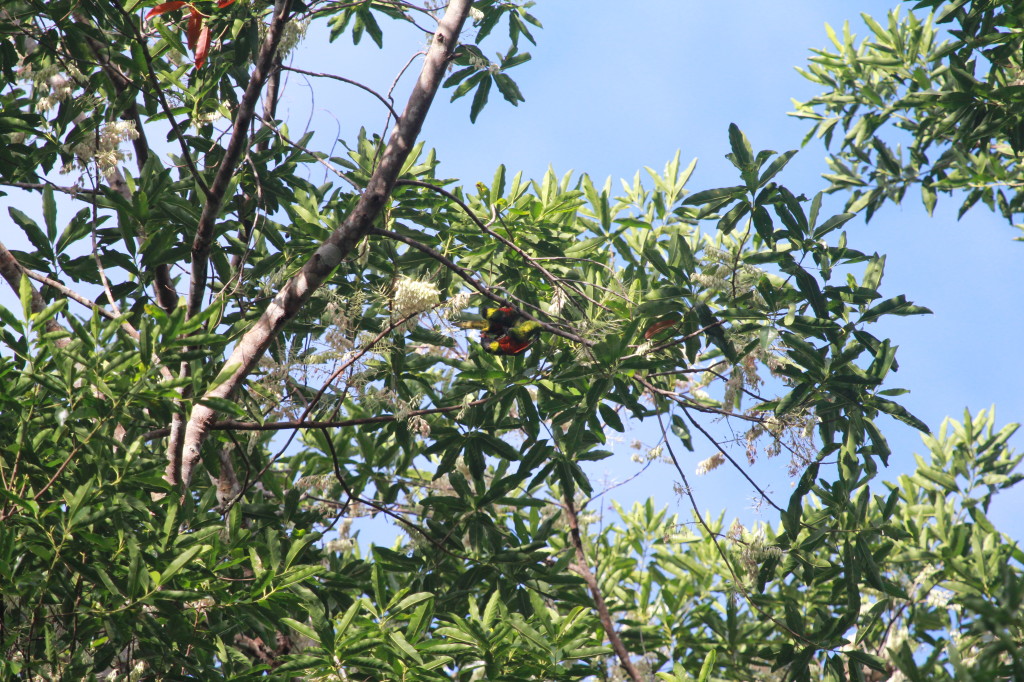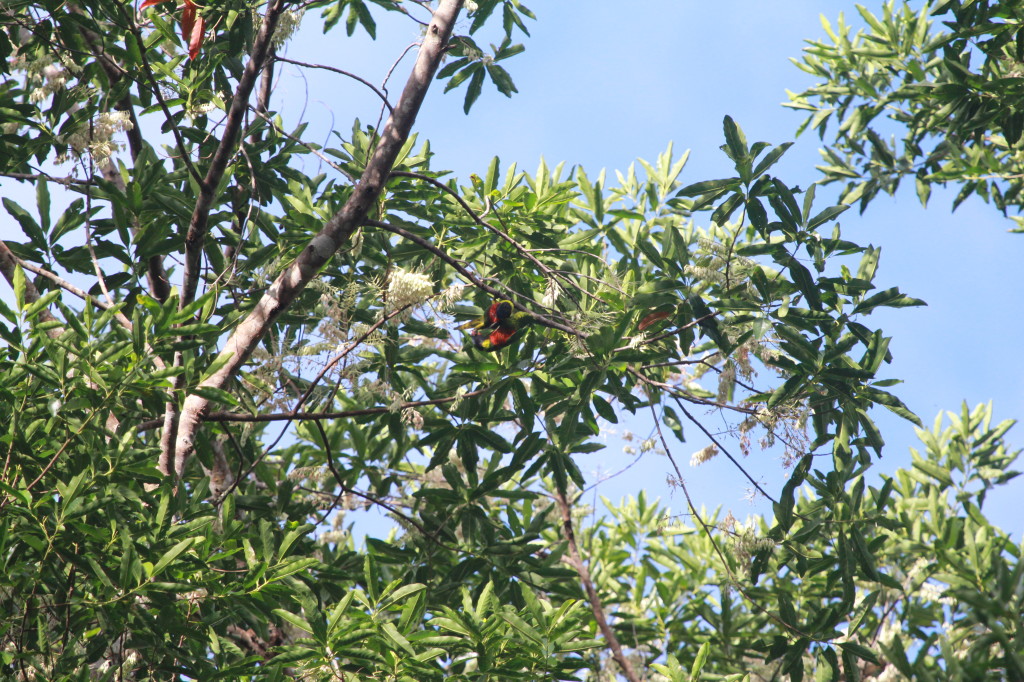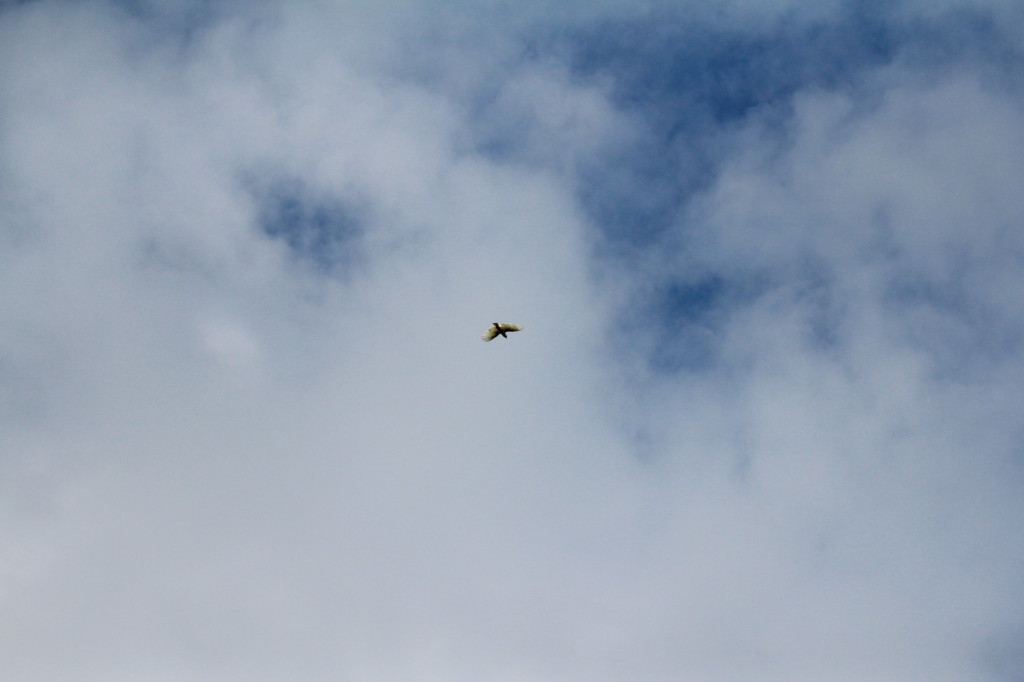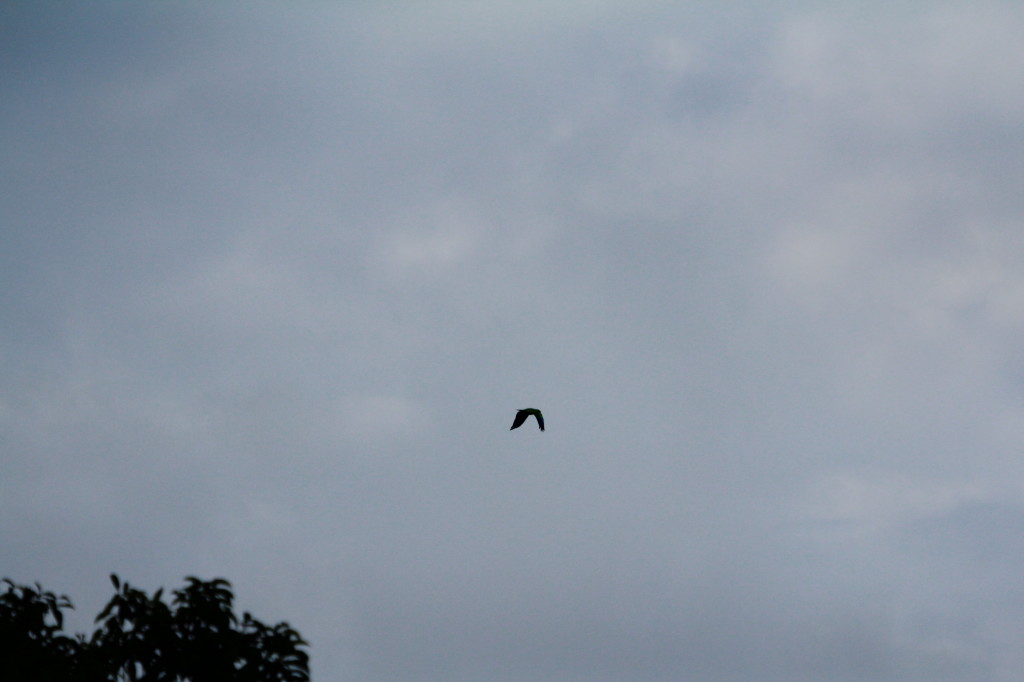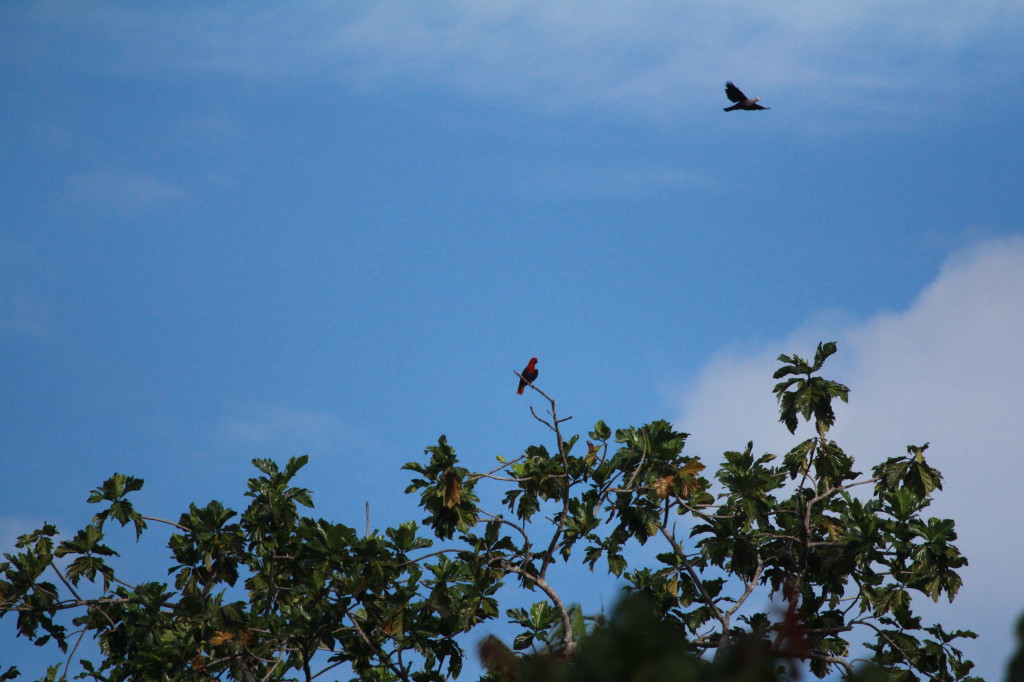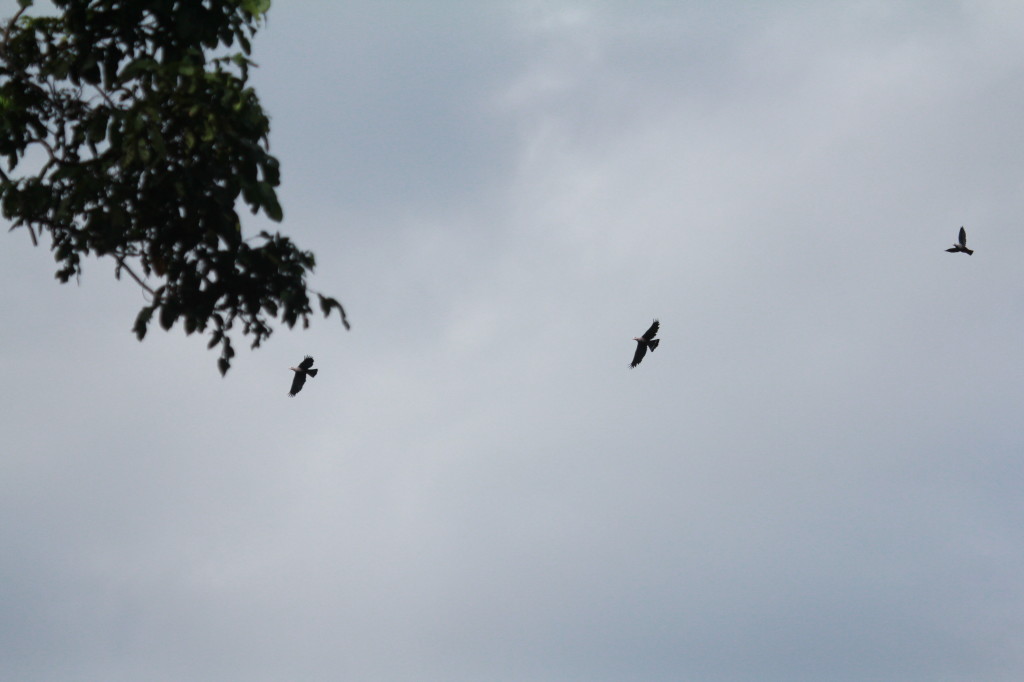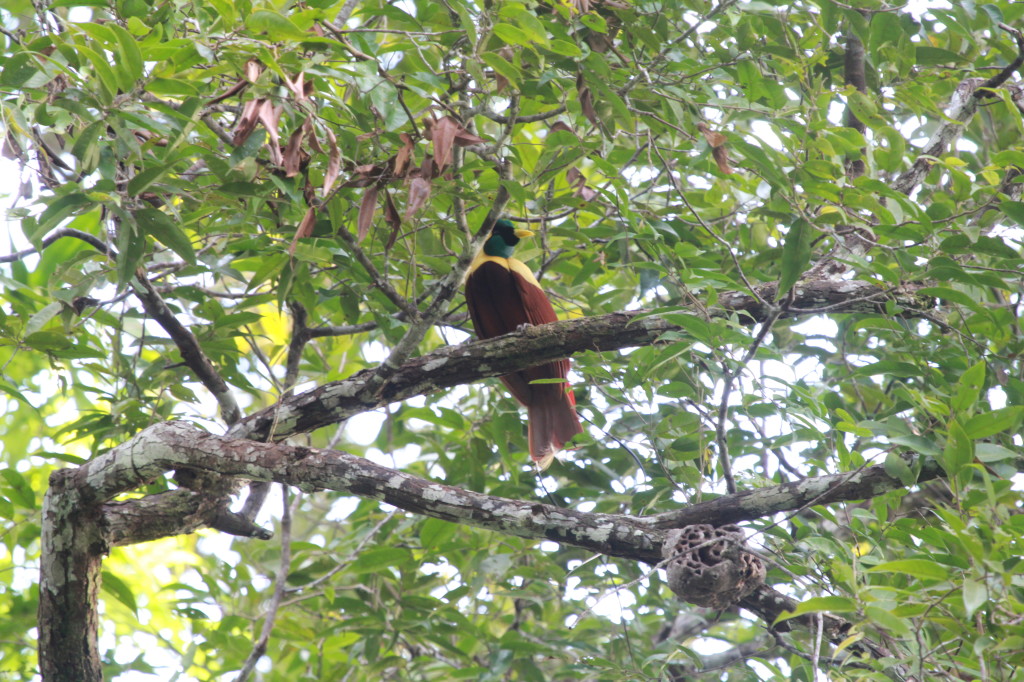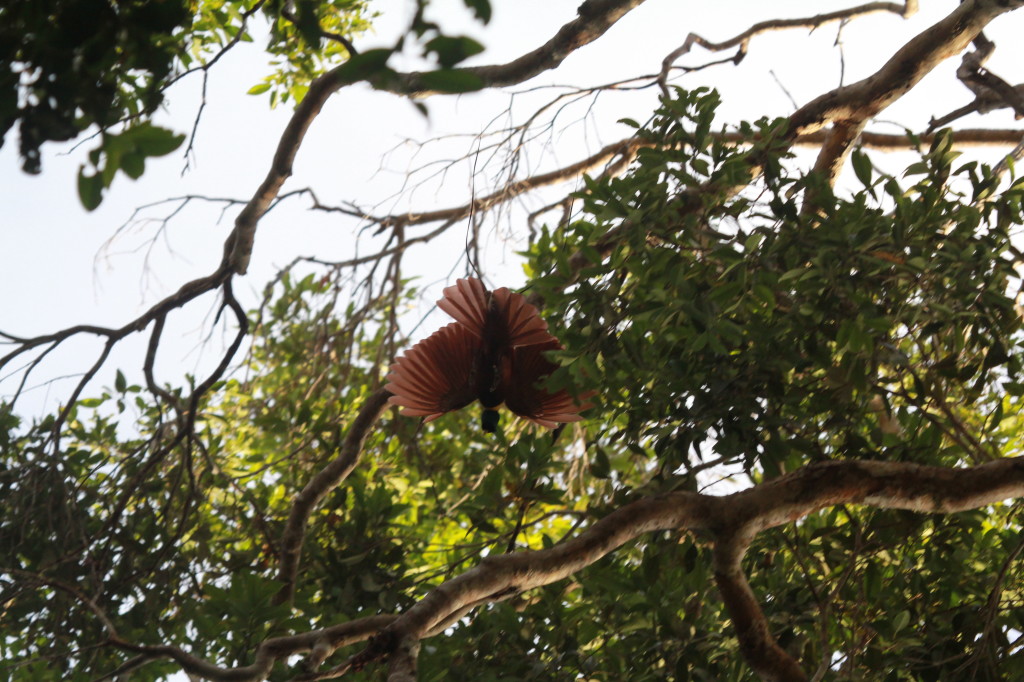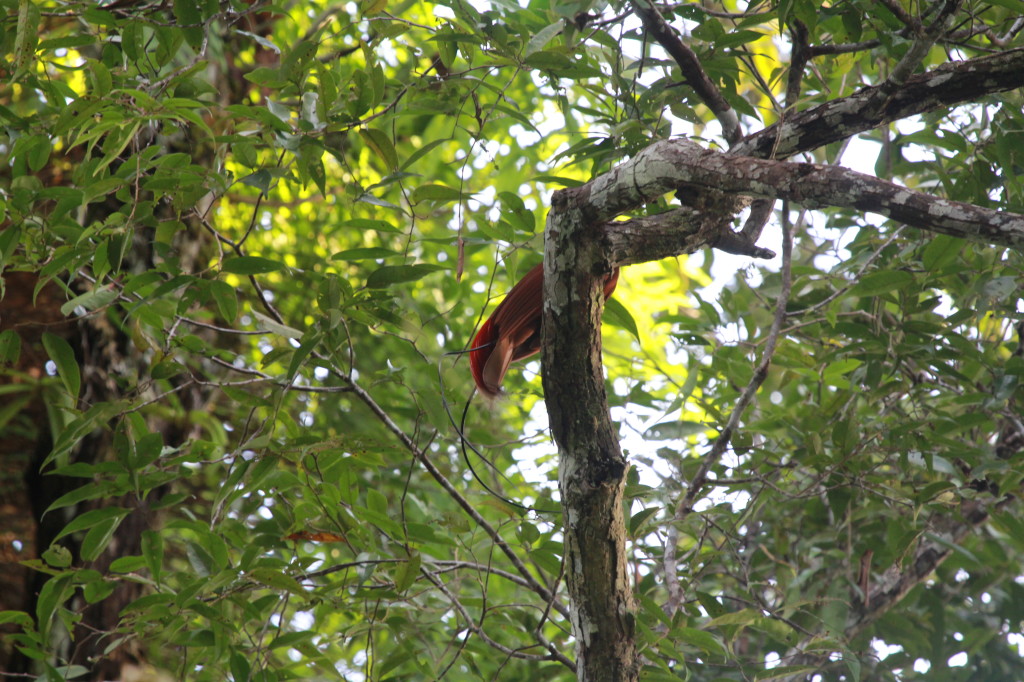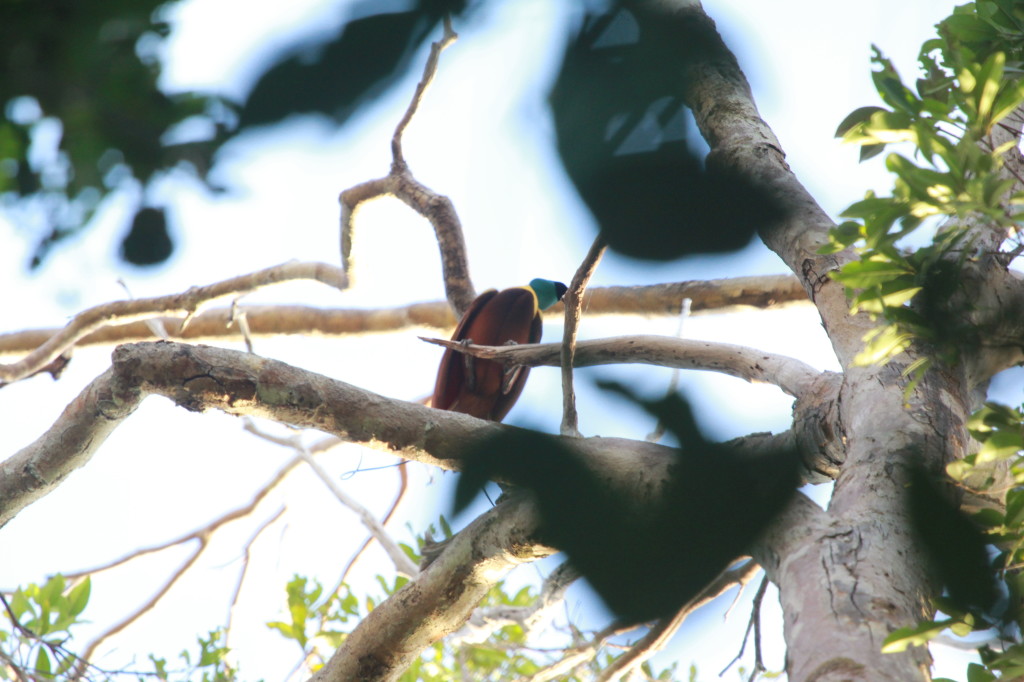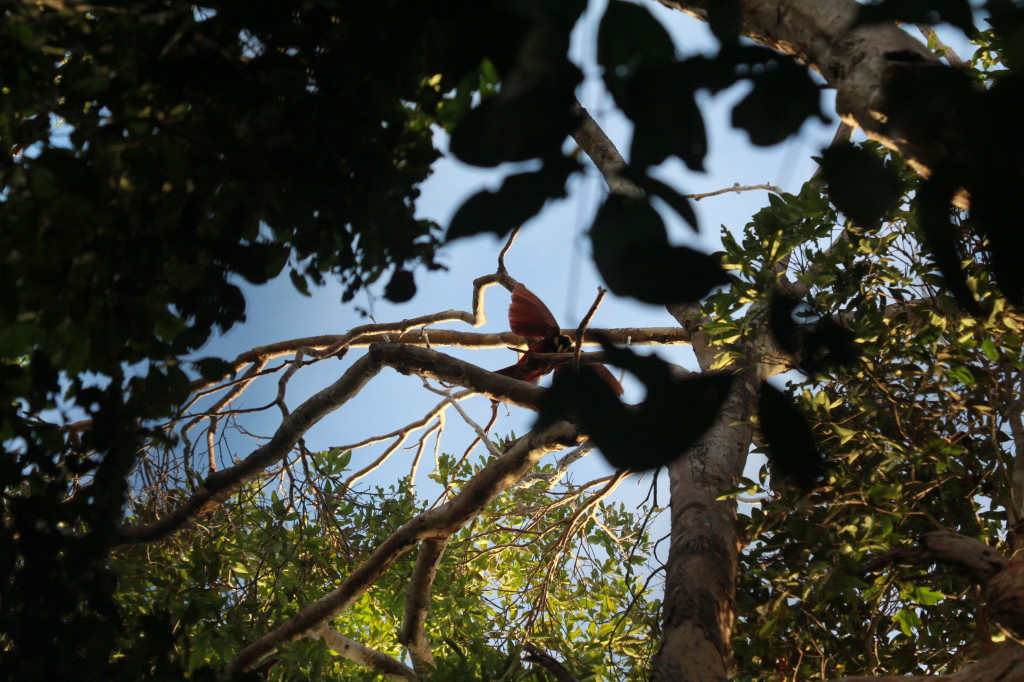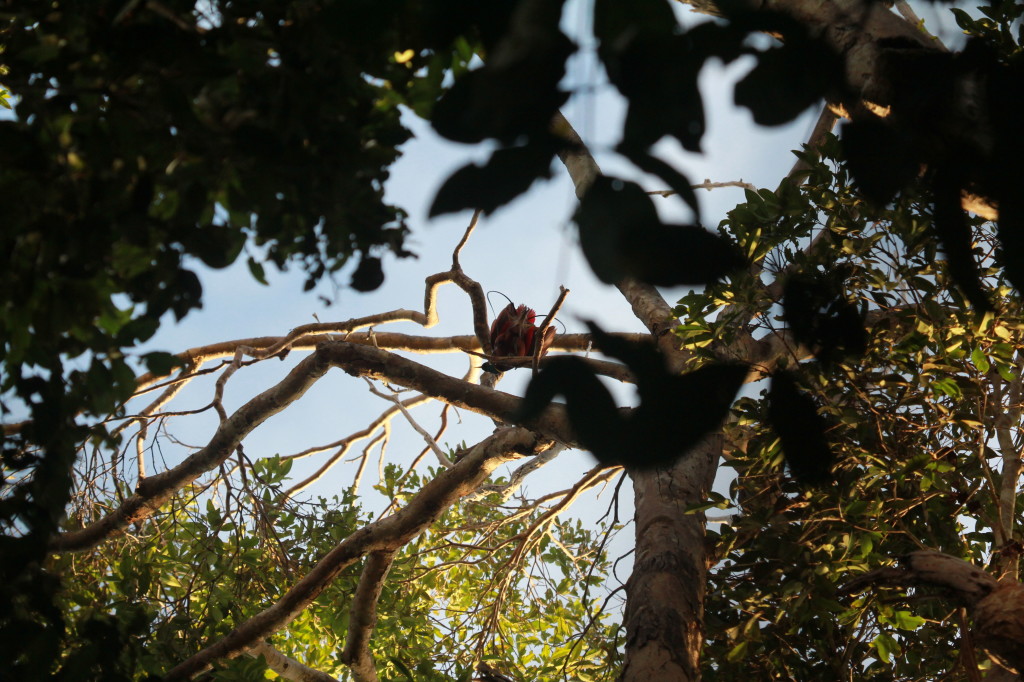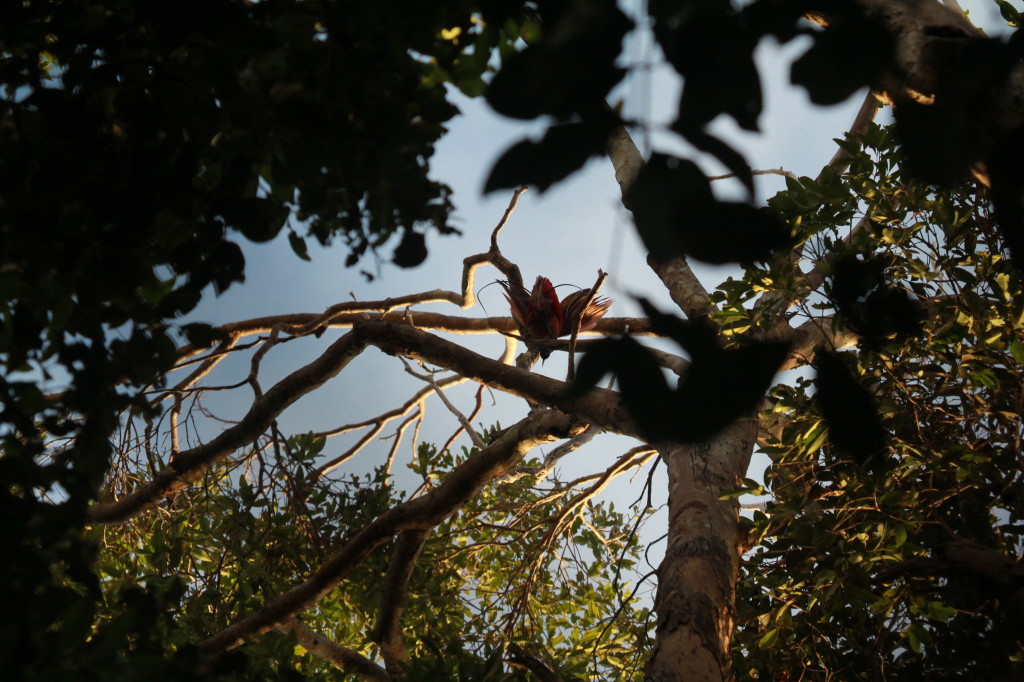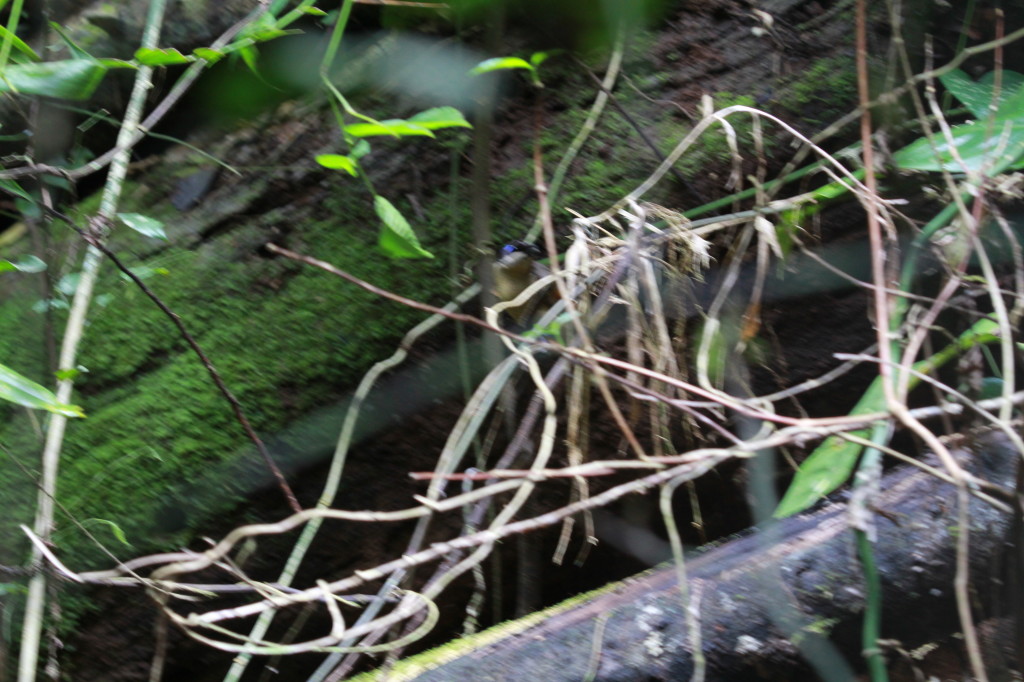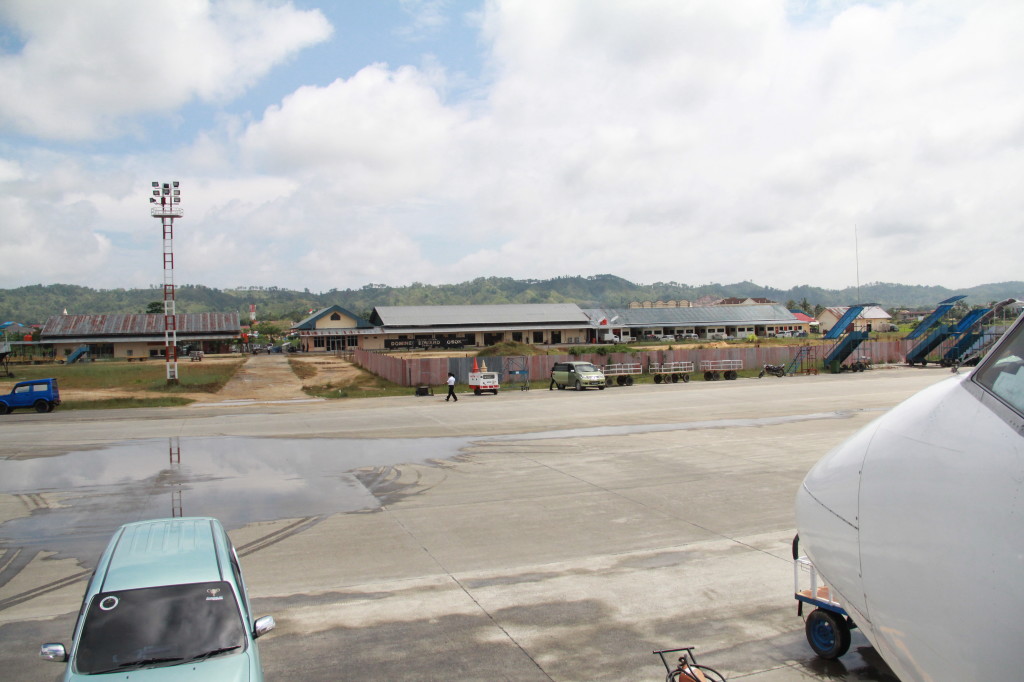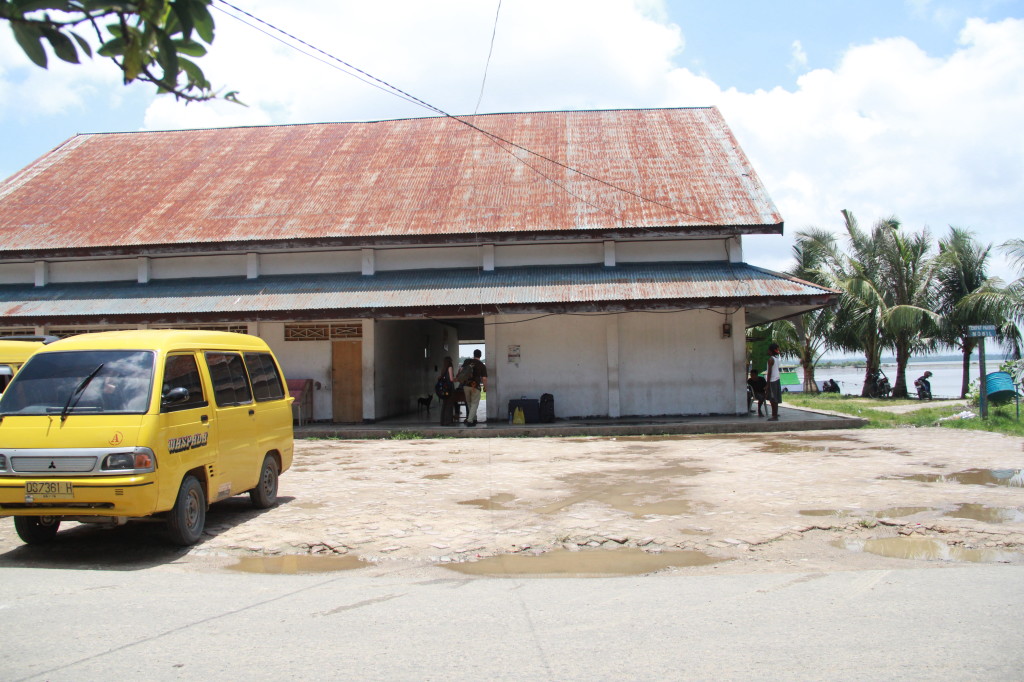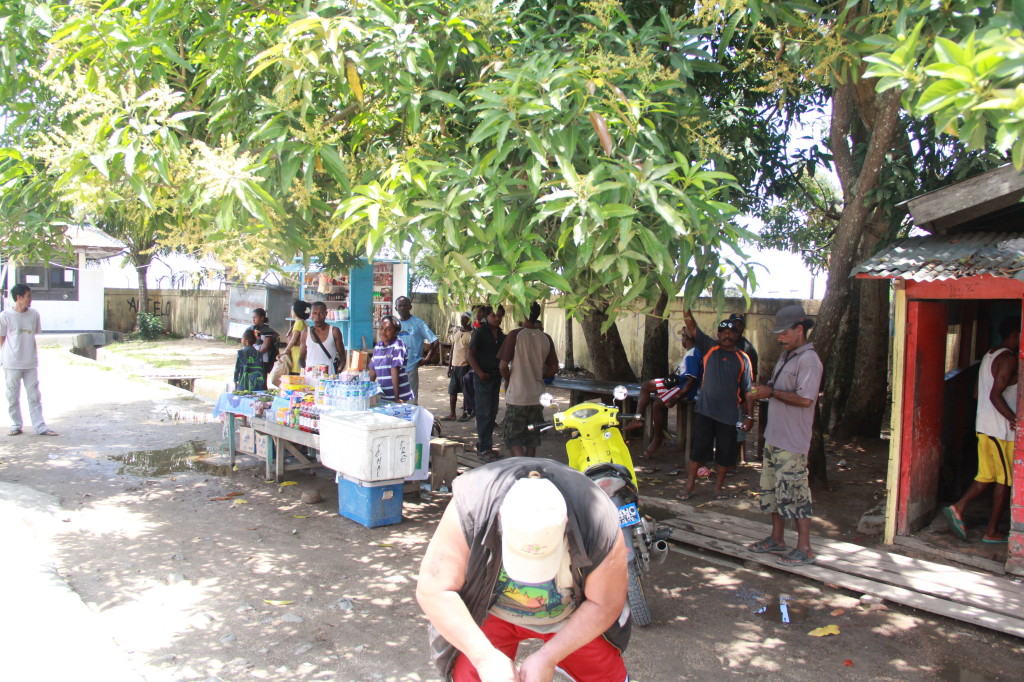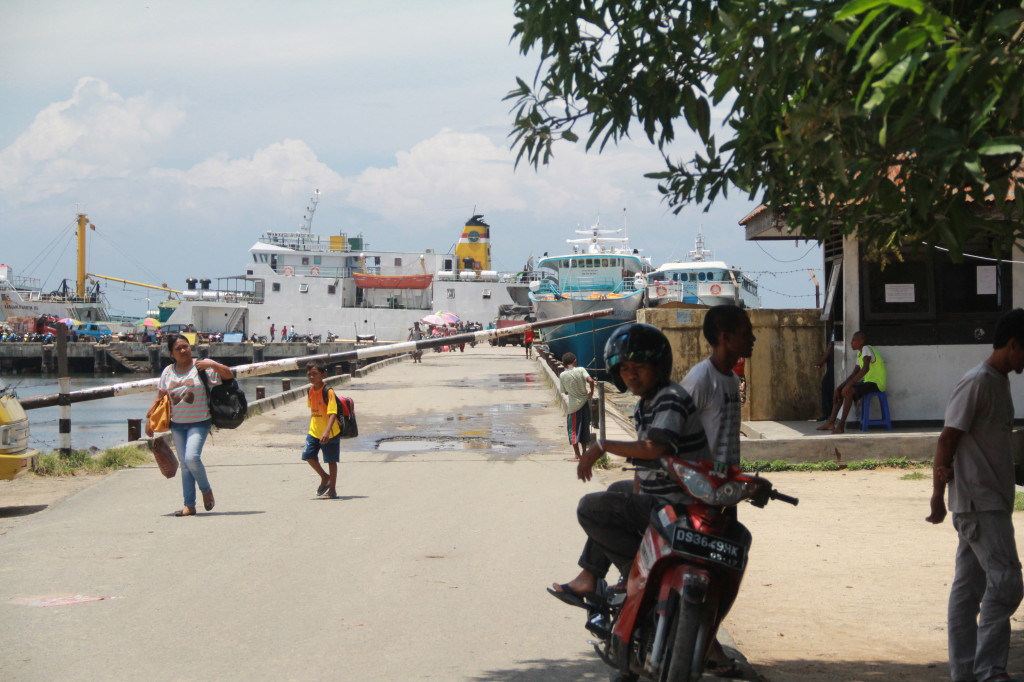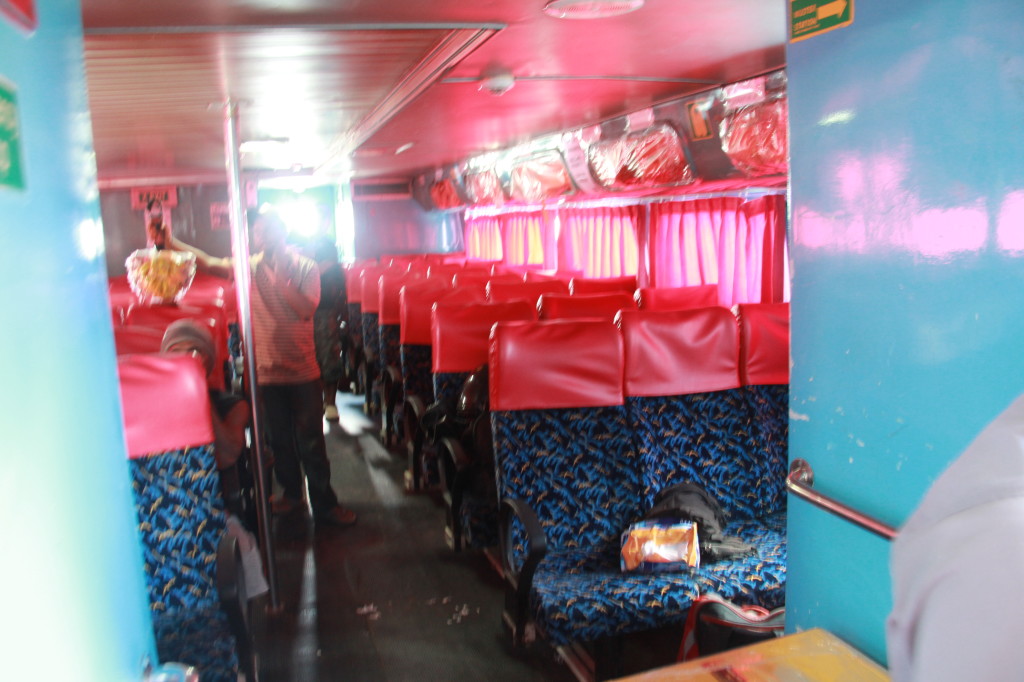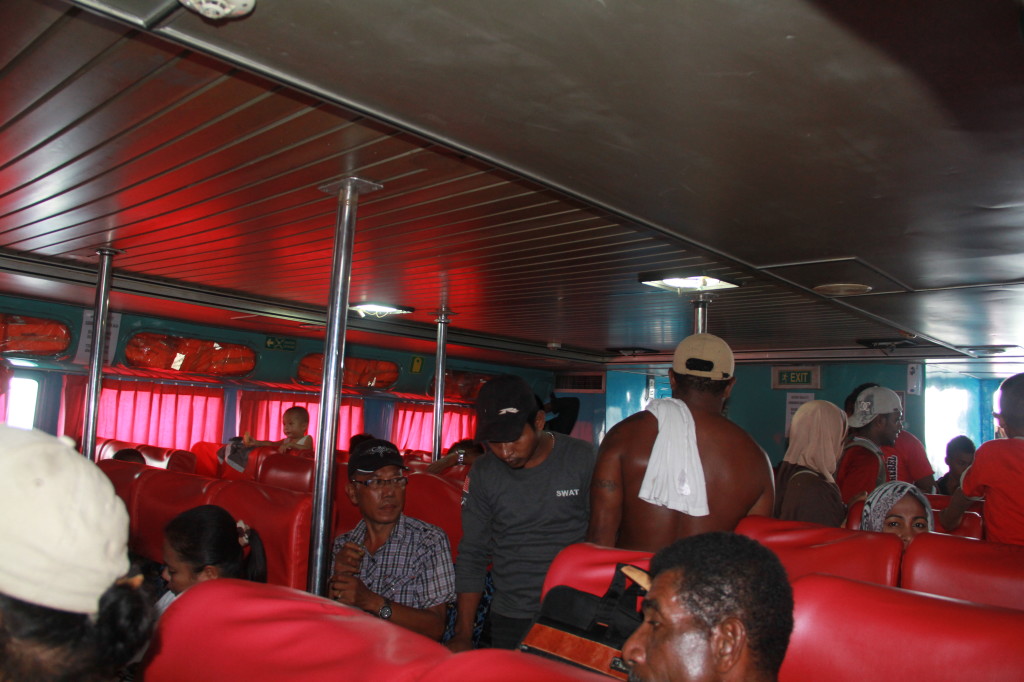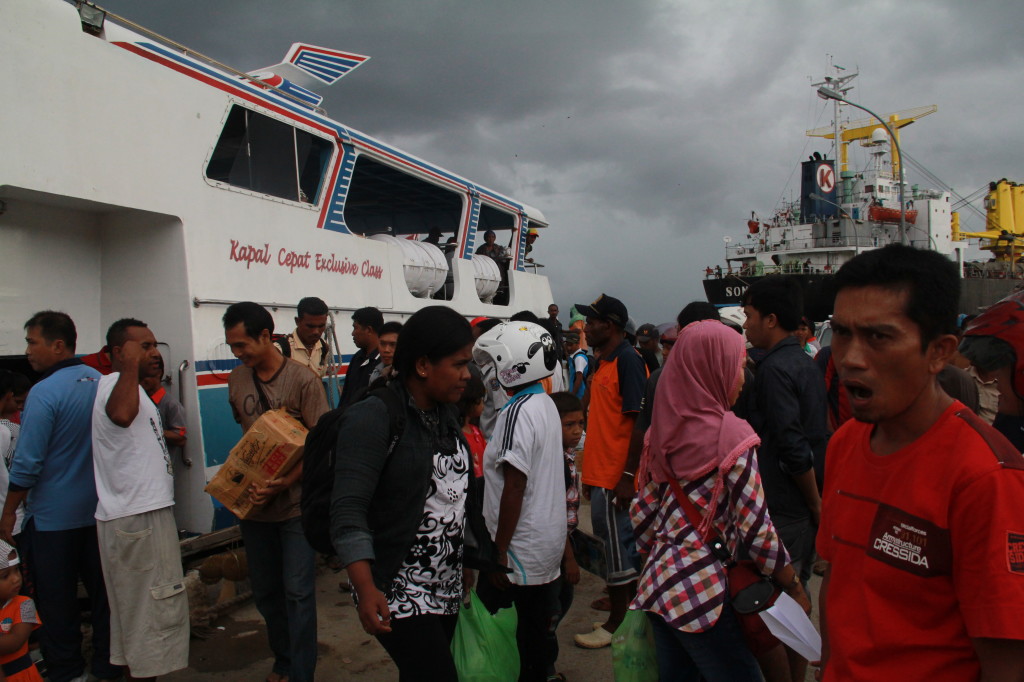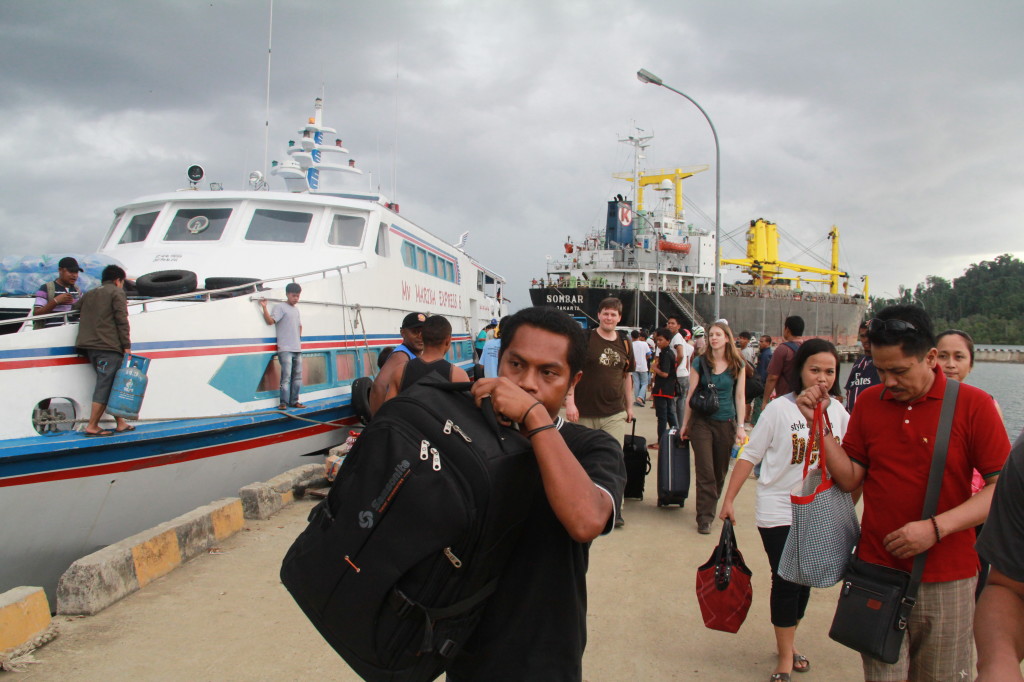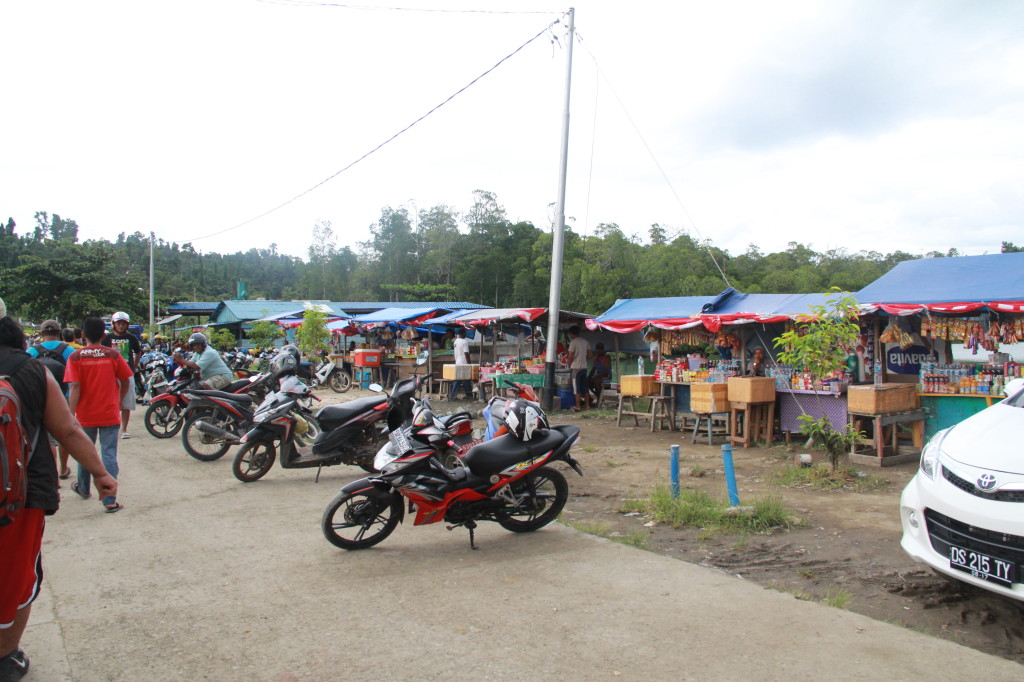Actually the first day of birding wasn’t THAT easy. We had hired a normal car to get up the hill from which we would have a short hike to the hides for Wilson’s Bird of Paradise and the Red Bird of Paradise. We got about halfway up, then the road became so bad (potholed) that only a high-clearance 4WD was going to get up the hill. It was hot and a tough slug up but at least we weren’t walking in mud! The next day, we used a 4WD truck and had a very pleasant and much easier day of birding. There are lots of birds to see in Raja Ampat. There’s a full birdlist on Avibase. Since I was targeting parrots and the 2 BOPs, I will copy the parrot list here and highlight in red the ones we actually saw during our 2 day stay on Waigeo.
| Psittacidae | ||
| Orange-fronted Hanging Parrot | Loriculus aurantiifrons | |
| Yellow-capped Pygmy Parrot | Micropsitta keiensis | |
| Palm Cockatoo | Probosciger aterrimus | |
| Sulphur-crested Cockatoo | Cacatua galerita | |
| Black Lory | Chalcopsitta atra | |
| Violet-necked Lory | Eos squamata | Endemic (country/region) |
| Rainbow Lorikeet | Trichoglossus haematodus | |
| Black-capped Lory | Lorius lory | |
| Red-flanked Lorikeet | Charmosyna placentis | |
| Red-cheeked Parrot | Geoffroyus geoffroyi | |
| Great-billed Parrot | Tanygnathus megalorynchos | |
| Eclectus Parrot | Eclectus roratus | |
| Moluccan King Parrot | Alisterus amboinensis | Endemic (country/region) |
| Double-eyed Fig Parrot | Cyclopsitta diophthalma | |
| Large Fig Parrot | Psittaculirostris desmarestii | |
Hasna from HamuEco Lodge had organized Benny to be our guide as he knows the locations of the Wilson’s Bird of Paradise and Red Bird of Paradise (BOPs) and had even built hides in their display grounds. He charged us 150,000 rupiahs per person per day and he can be reached on his mobile phone 0852 54881306 or though Hasna at HamuEco via their Facebook page. Once you get up the hill, it’s a short walk to the grounds where you see the BOPs. It’s not too steep but can be muddy after rain. There are plenty of fallen logs to sit on if you need a rest. Once you are in the hide, you need to be very quiet so you don’t scare the birds away.
Of course there are several parrot species in Waigeo too and they can easily be seen flying overhead on the same hill you walk up for the BOPs. I also saw Palm Cockatoos flying over the trees while relaxing in my overwater bungalow at HamuEco. Once again, I didn’t get very good shots other than the Eclectus Parrot who was perching. The other parrots were what I call “Video Game Birds” – meaning they fly quickly overhead or off in the distance. My challenge is to try to get the little red dot in my viewfinder on the flying bird and hold it long enough to get a shot, all the while trying to hold 3 kgs worth of camera and 400mm lens! I never was any good at video games, LOL! Don’t consider these as professional photos, they are far from it. What they are good for is showing you how far you will be from the birds and what sort of gear you will need to bring in an attempt to get photos. I didn’t bring a tripod as it’s pretty much useless for flying birds and hiking through the rainforest. I didn’t have much choice about the back-lighting so sorry about all the silhouettes!
OTHER ISLANDS IN RAJA AMPAT
As I mentioned in my other post, if you are with a tour group, you will probably go to Batanta and Salawati with a chartered boat. The birdlist for Batanta is pretty much the same as Waigeo (see above). The birdlist for Salawati has more in common with that of the Sorong Lowlands which I will cover in a separate post.

